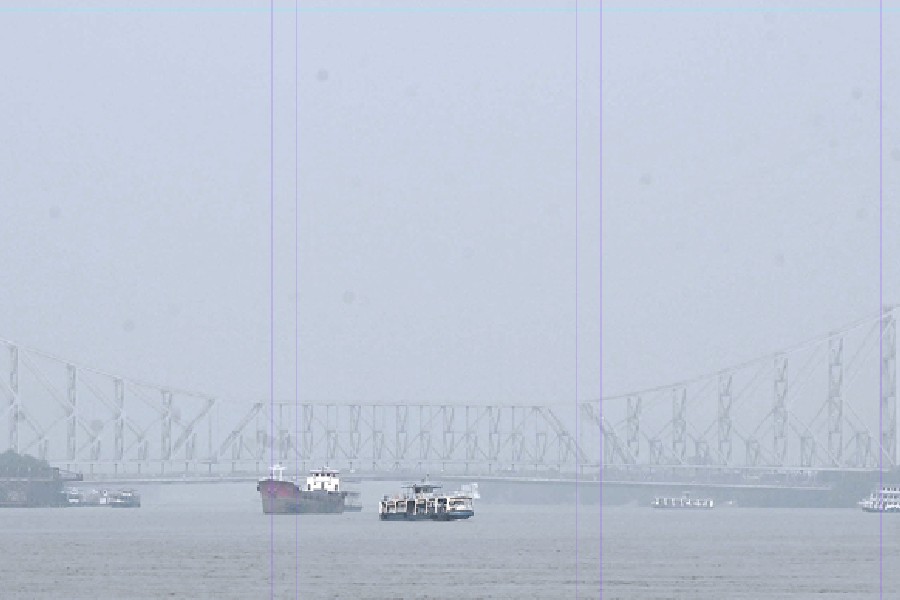Stop open burning of waste, water dusty roads and cover construction sites so dust particles do not spread — these are among the mitigation measures that can offset the impact of worsening air quality.
A drop in air quality can impact anyone but those with chronic lung and heart diseases or allergic rhinitis are more at risk, said doctors.
Worsening air quality weakens the body’s defence mechanism and makes people vulnerable to respiratory trouble.
Metro has been reporting how the city’s air quality has worsened over the past few days.
At least three air quality monitoring stations, run by the Central Pollution Control Board (CPCB), have recorded a drop in the air quality
from “satisfactory” on Diwali night to “moderate” on Friday and “poor” on Saturday night.
The trend has been sustained.
“Studies have shown that open burning of solid waste, and road and construction dust are major contributors to air pollution in Calcutta. The authorities must identify the places where waste is burned in the open and stop the practice,” said Abhijit Chatterjee, a professor of environmental sciences at Bose Institute.
“During winter people burn waste at night or in the morning to stay warm. These are also the times when temperatures are lower than the rest of the day and the pollutants remain trapped in the air close to the ground.”
Chatterjee, who specialises in air pollution and climate change, said sprinkling
water on roads twice a day helps prevent re-suspension of road dust. “It should be done once in the morning and again in the evening,” he said.
Data published by the CPCB showed that at 6am on Monday, the air quality was “poor” in Ballygunge and “moderate” at the six other monitoring stations — in Bidhannagar, Fort William, Jadavpur, Rabindra Bharati University (BT Road campus), Rabindra Sarobar and Victoria Memorial.
Residents of Howrah was breathing even worse air. At 6am on Monday, the air quality was “poor” at three stations — Indian Botanic Garden (Shibpur), Dasnagar and Padmapukur. It was “moderate” at Belur Math.
Data at the Ghusuri station in Howrah was “insufficient”.
According to the CPCB, “moderate” air can cause “breathing discomfort to the people with lungs, asthma and heart diseases”, while “poor” air can cause “breathing discomfort to most people on prolonged exposure”.
“Satisfactory” air can cause “minor breathing discomfort to sensitive people”.
Chandramouli Bhattacharya, an infectious disease specialist at Peerless Hospital, said a drop in the air quality weakens the body’s defence mechanism.
“Those with lung conditions like COPD (chronic obstructive pulmonary disease) and asthma and those with allergic rhinitis are among the people who are more sensitive to a drop in the air quality. People with cardiac diseases are vulnerable, too,” he said.
“Every winter, I have patients complaining of COPD exacerbation, pneumonia or other respiratory problems.”
The National Environmental Engineering Research Institute had in 2017-18 done a source apportionment study for air pollution in Calcutta and Howrah. The report was submitted in 2019.
The study found that vehicles contributed 25 per cent of PM2.5 in Calcutta’s air during winter, secondary aerosols contributed 32 per cent, wood combustion 15 per cent and coal burning 9 per cent.
A scientist with the state pollution control board (PCB) said: “Barring some exceptions, a large number of old and polluting vehicles, which were more than 15 years old, have been phased out. But the number of cars has increased and there will be a cumulative impact of this increase on air pollution.











